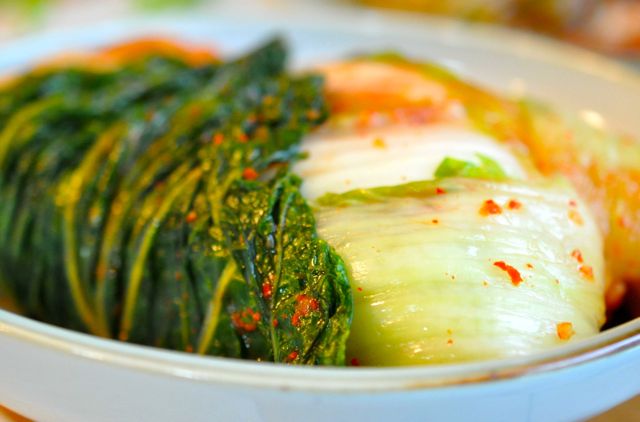
The last time I took part in Kimjang (Korean tradition for making a lot of Kimchi to last through the winter months) was when I was still living at home in Seoul. Our family was quite large back then and we lived in a home where our back yard actually had buried kimchi jars. If my memory serves me right, I think we pickled 100~200 cabbages each winter which meant it was really a several day event – couple days to wash and salt the cabbages + prepare the yangnyum and other ingredients, another couple days to rinse and stuff the cabbages.
Many people will say Kimjang is hard work but for me it was a very fun and exciting time. Fun because family and friends got together, worked all day long (even sometimes outside in the cold) but also shared some good food and good times with each other. I remember a particular joke adults played on each other – wrapping up a big piece of ginger inside a piece of freshly made cabbage kimchi and offering it to another to taste. Yikes!!!
My family usually made at least 3-4 kinds of kimchi: the original stuffed whole cabbage(배추김치 baechoo kimchi), radish kimchi in water (동치미 dongchimi – this is a North Korean favorite), kimchi wrapped in cabbage parcels (보쌈김치 bossam kimchi) and young radish kimchi (총각김치 chonggak kimchi aka ‘bachelor’ kimchi). This year, my mother-in-law made white cabbage kimchi (백김치 white kimchi), two kinds of traditional cabbage kimchi (one with fermented anchovies and another with fermented shrimps).
Please note: This Part 1 post is a rough overview of what happened during Kimjang Day. Part 2 will contain a more detailed discussion of ingredients and tips on how to make a great tasting kimchi.
Time: 2 days Servings: 10-12 servings Difficulty: difficult
Ingredients for traditional cabbage Kimjang Kimchi
* these measurements are approximate and should be adjusted to taste
- 2 Korean Napa cabbage (배추 baechoo)
- 1 large Korean radish (무우 moo)
- 3~4 C sea salt with bittern removed
- 20 C water (for brine)
- 1 C ~ 1 1/2 C Korean chili powder (adjust to taste – even up to 2 C)
- 1/2 C chopped garlic
- 1 T chopped ginger
- 8 green onions, sliced thin 1 1/2 in long
- 7 oz water parsely/water dropwort (미나리 minari), cut 1 1/2 in long
- 1 bunch Korean mustard greens (갓 Gaat)
- 1/2 C total fermented seafood sauce (one or more of the following)
- fermented anchovies (멸치젓 myulchijeot)
- fermented shrimps (새우젓 saewoojeot)
- fermented yellow croaker (조기젓 jokijeot)
- fermented sand lance (까나리젓 kkanarijeot)
- 1/3 C chopped fresh shrimp or fresh oysters (optional)
- OPTIONAL (really, this is extra)
- Korean or Asian pear
- persimmon (the hard kind)
Directions
- Prepare cabbages: First, set aside about 1/2 C of the sea salt to sprinkle directly in between cabbage leaves. Dissolve remaining sea salt with 20 C water to make brine. Cut cabbages into 2-4 pieces and soak in brine for 30 minutes. Drain (save the brine) and then sprinkle salt between leaves focusing on the thicker, white fleshy part. Soak the cabbages overnight or 8-10 hrs in the brine again. Turning 1-2 times to evenly pickle the cabbage. When properly salted, the cabbages should look something like this..
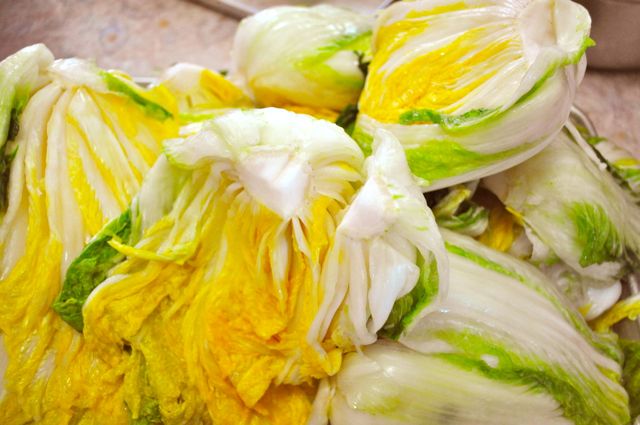
salted cabbages rinsed for kimchi Rinse the salted cabbages in water 2-3 times and let it drain fully (1 hr or so).
** Salting cabbages correctly is pretty tricky and some people say it’s actually the most difficult part of making kimchi. So these days, many cabbage farms sell already salted cabbages which makes the whole process so much easier.
- Prepare yangnyum :
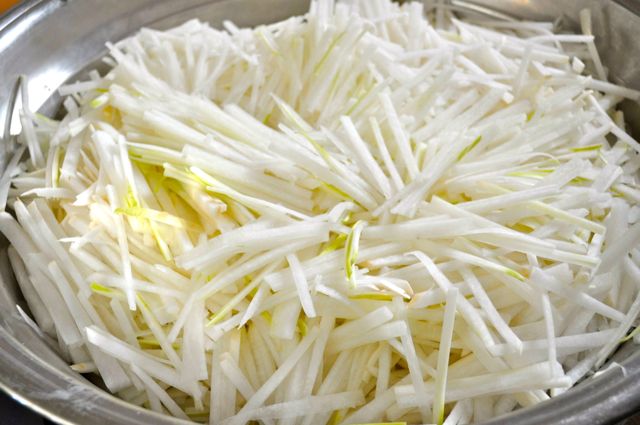
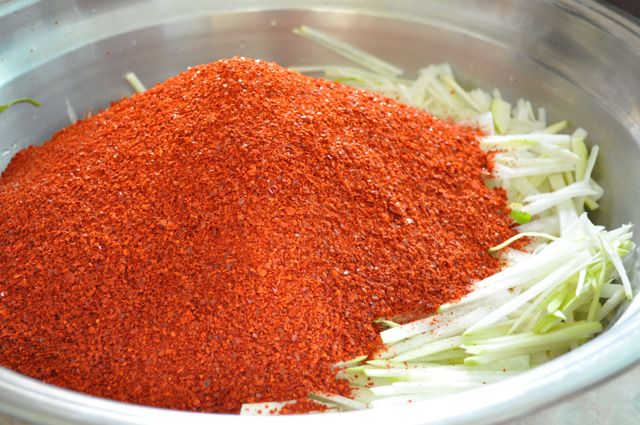
Mix the radish with chili powder until radish pieces are completely coated.
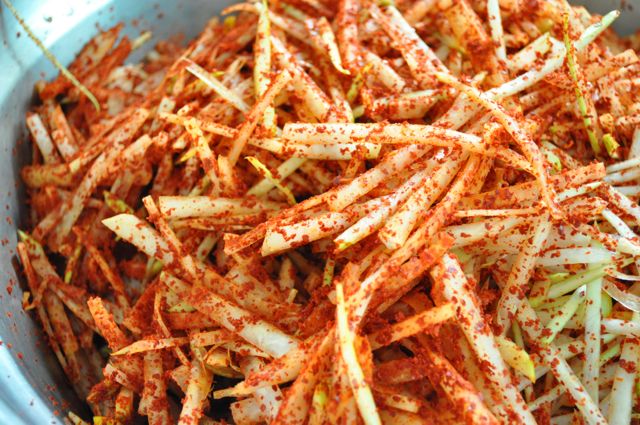
Wash and cut green onions, dropwort and mustard leaves. In volume it’s about equal amount to radish.
Mix the greens into the yangnyum. Also add ginger and garlic.
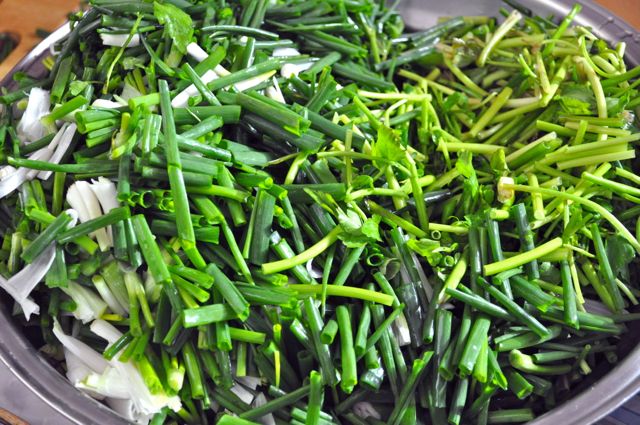
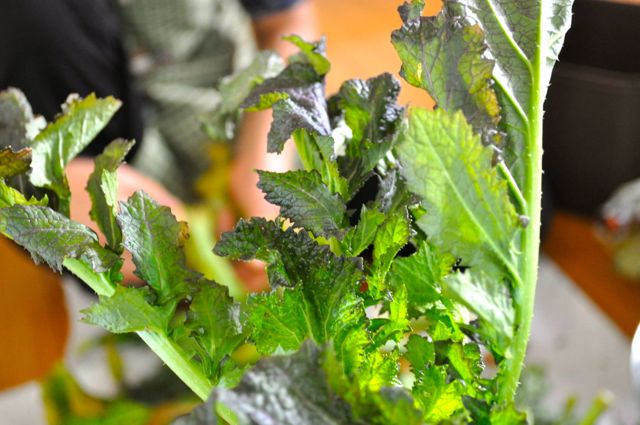
These miniature shrimps are the same shrimp used to make fermented shrimps (새우젓 saewoojeot). Using fresh shrimp is totally optional but many like to add them because it makes Kimchi taste better – a little sweeter? If you can’t find miniature shrimps, you can just add regular minced shrimp meat and it will taste just as good.
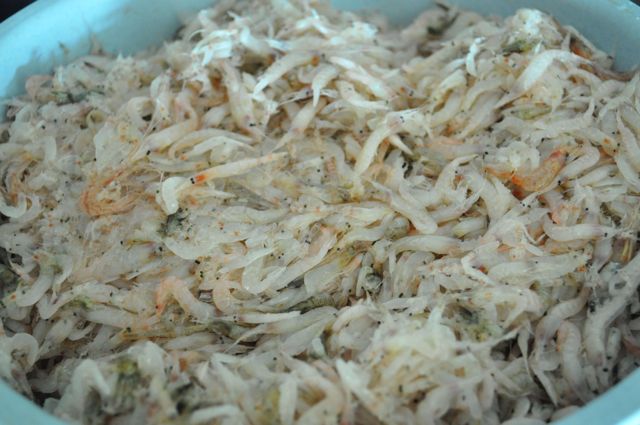
Now add the fermented stuff. I listed several options but the basic one to use is either the anchovies or shrimps. You can add both or just one. Add the liquid from fermented anchovies (멸치젓 myulchijeot) or fermented shrimps (새우젓 saewoojeot) by pressing them through a sieve or squeeze the juice by hand. My picture of anchovies was pretty bad so I’m just posting the shrimps and yellow croaker here.
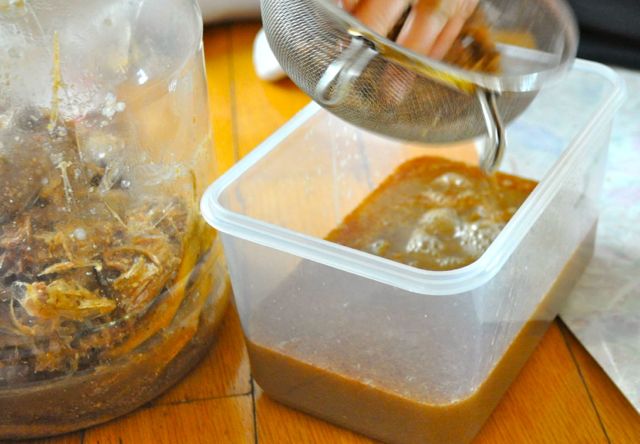
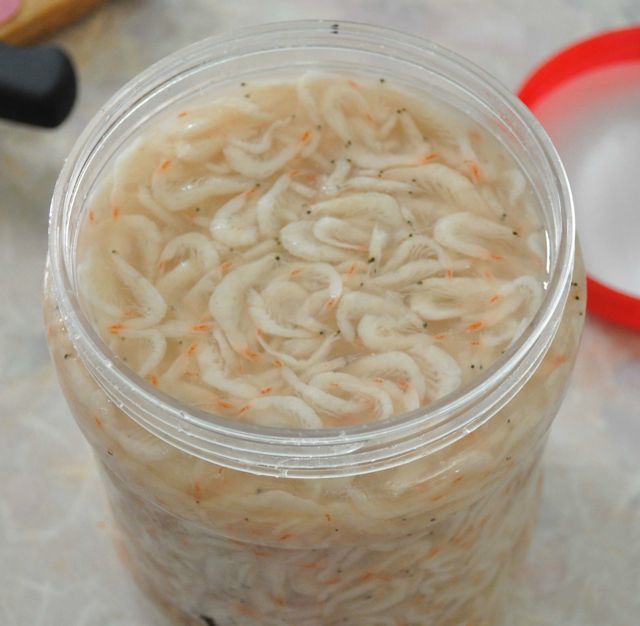
Optionally add sliced pear (thicker strips than radish since pear breaks easily) and/or persimmon to yangnyum. Just a handful of pear/persimmon will do fine. The fruits add natural sweetness to Kimchi without additional sugar.
Taste the yangnyum. It should taste saltier, spicier and more pungent than how a ripe kimchi tastes. But it should still taste pretty good overall. Add more fermented shrimp or anchovy liquid if it’s not salty enough. You can also add regular sea salt instead. The saltiness and spiciness will lessen (maybe about 20% less?) with fermentation.
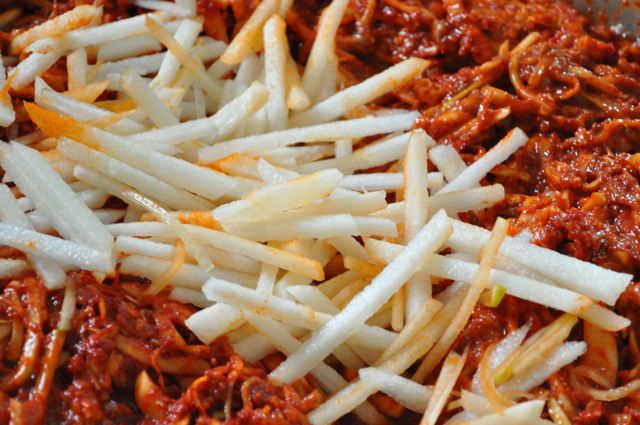
3. Now it’s time to stuff the cabbage:
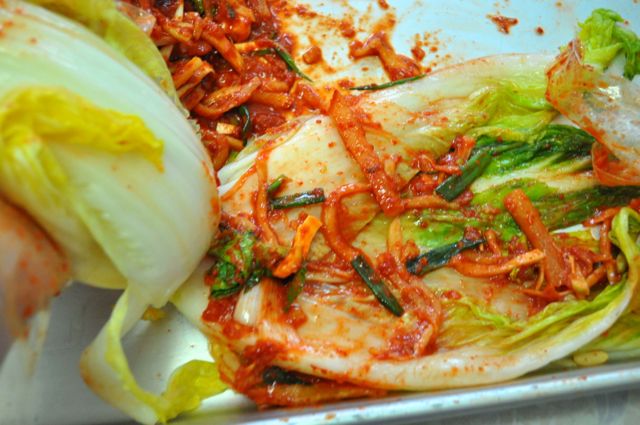
Take each cabbage halves or quarters and insert about a heaping tablespoon amount of stuffing in between each of the leaves. Start from the larger leaves and work your way up to the smaller leaves. Don’t worry about coating the whole leaf but concentrate on the thicker white parts of the cabbage.
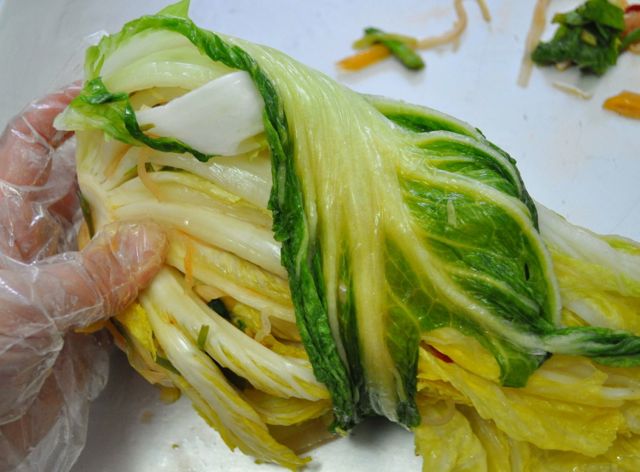
When you are done stuffing all layers, take the outermost leaf and wrap the cabbage to keep the stuffed yangnyum from falling out. In a large container big enough to hold all the cabbages, start packing in each of the stuffed cabbages as tightly as possible.
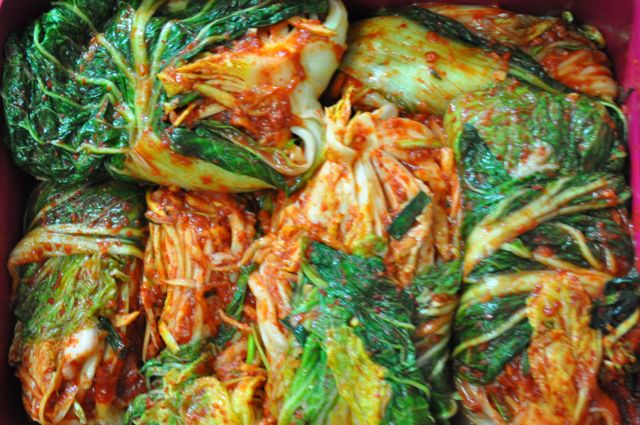
This is a large rectangular container that comes with my Kimchi fridge. But you are welcome to use one of those large pickle jars or any container that suits you. The goal is to pack the cabbages tightly so that they can ferment in their own juices as much as possible.
4. Because Kimjang Kimchi is meant to last through the winter, it should ripe slowly in the most ideal temperature. See my No Crazy Kimchi post for more detailed info on ripening kimchi.
In this year of 2012, a survey showed only 52% of Korean families plan to do their own Kimjang – down from last year’s 57%. 20 years ago, my guess would be that over 90% of Korean families did their own Kimjang. Unless you were too poor or too sick to do it, it was a must for every Korean family. With families getting smaller and young people’s taste becoming more westernized, the trend will likely continue. Which made me cherish this year’s Kimjang even more…
Check out Kimjang Part 2 for tips ingredients used in Kimjang Kimchi.
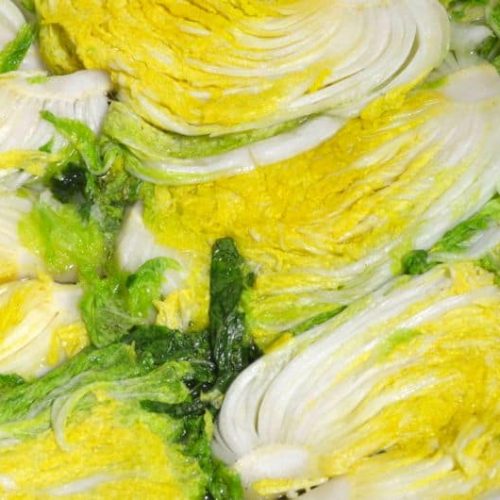
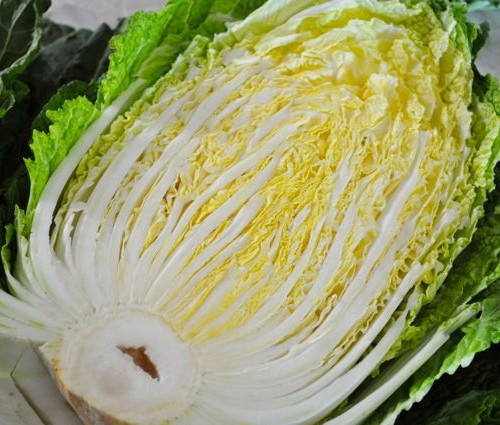
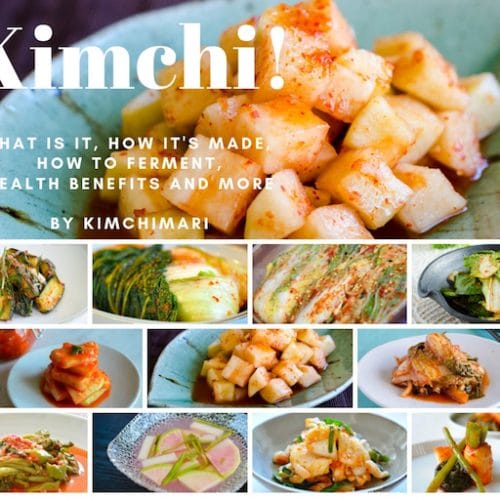


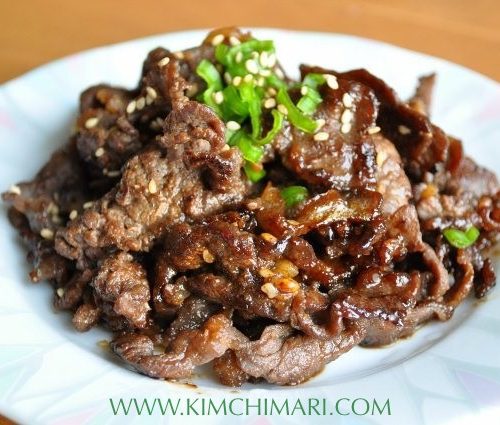
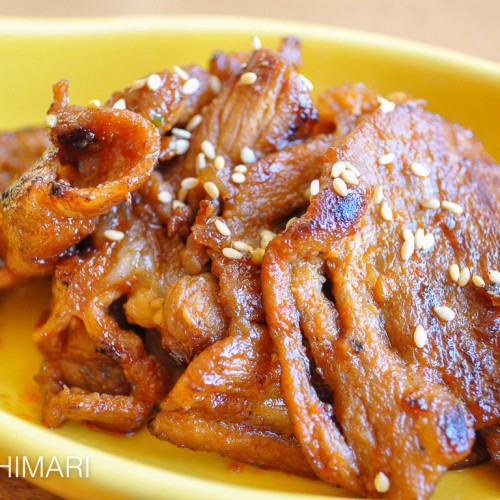
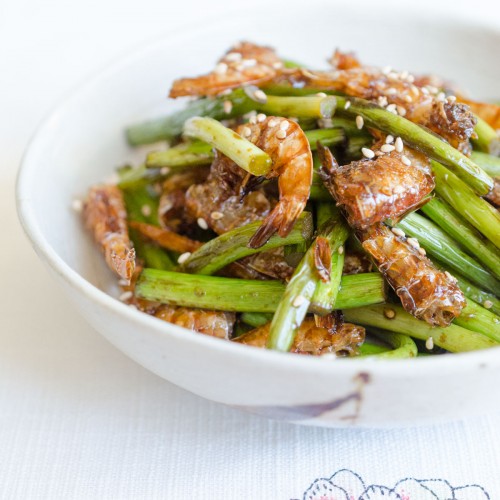
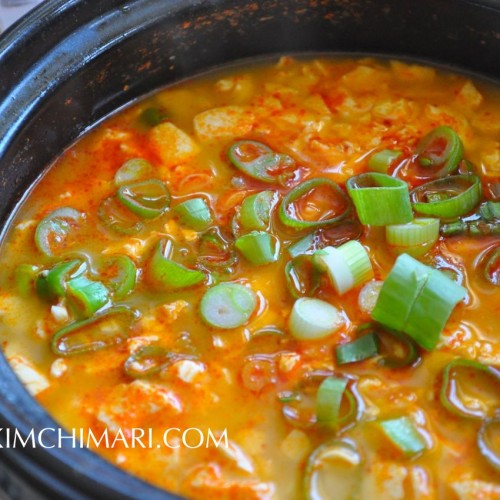
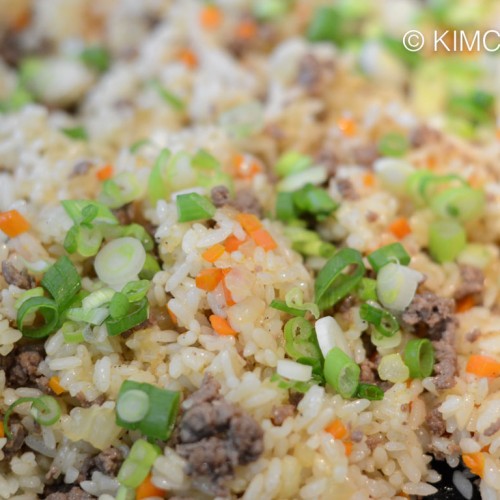
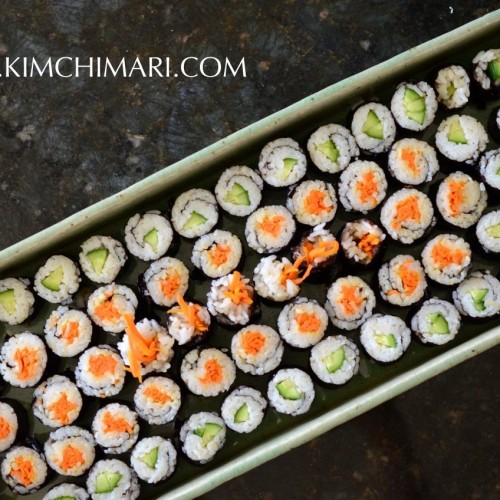









At no point in the directions did you mention adding the garlic or ginger so my husband forgot to add them. ???? Will it still turn out ok? ????
Oh dear .. I am so sorry..I somehow missed that. Has it been long since you made the kimchi? If it has been only 1-2 days maybe you can still add them in? Honestly I am not sure how it will turn out. I think it should still be somewhat ok – maybe it will have a little less zing..my apologies. Let me know how it turns out. Thank you for your feedback.
I want to make my own kimchi and we do have a Korean food shop in Cambridge, England, where I live. I am not sure what the measurement “C'” is – I assume it is for Cup?? Can somebody tell me please. Also, I have many kilner jars which I want to store it in so are these suitable for Kimchi? Will it stay good for years the way jam does? I hope someone can answer these questions. I think the ready made kimchi that I bought is probably fermented using vinegar and this will not provide the healthy gut bacteria that results from making the kimchi with brine.
Hi Joanna, Yes, C is for Cup. Yes, Kilner Jars will work great! One thing though – if it’s a clip top jar where the top is sealed air tight, you will need to keep it kind of loose because Kimchi does need to breathe and let the gas out while it is fermenting. Kimchi can stay good for months and even years (but will end up being very very sour) under ideal conditions (see my No Crazy Kimchi post for more info) but unlike Jam where it is kind of suspended, Kimchi will continue to ferment which means it will eventually be too ripe to be good. So happy to hear that you want to make your own Kimchi and you are right, you just can’t beat home made Kimchi. Thank you so much for asking and please don’t hesitate to ask if you have any more questions. Good luck!
Thank you so much for your speedy reply – that is massively helpful 🙂
Oh and btw, I don’t think it will make a huge difference but I am using US Cup which I think can be different from UK Cup. US Cup is 250ml. UK is 280ml? Glad that it was helpful!
That is really helpful. I so prefer to use the metric volumes and weights as they are so much more precise, so many thanks!
I took part in my cousin’s kimjang last year and like you, loved it! They grow just about everything they need, from the chili peppers to make the chili powder, green onions, and I think even the garlic. I was so impressed! As a 3rd generation Korean guy, it was a really great insight to take part. Someday, when I get off my butt, ill blog about it on my kimchi site.. Glad I found yours!
Growing everything I need is my dream!! I hope to do that some day. What is the name of your kimchi site? Thanks for finding my site~
It should be an Olympic event!
Haha!! Yes, it should be!!
Reblogged this on Adventures of Bamboo Girl and commented:
Love the process and ritual of making this healthy and delicious Kimchi year after year!
Glad you liked it! Thank you!